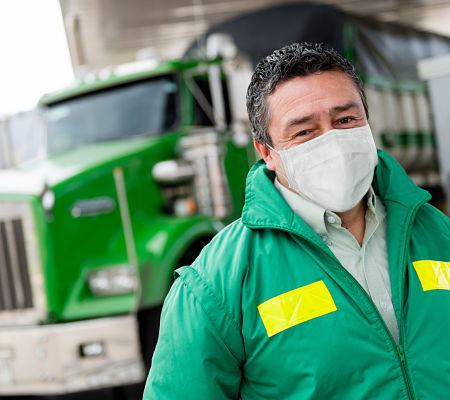Owner-operators say freight volume and rates are biggest concerns
An early July survey conducted by American Truck Business Services (ATBS) found that falling freight volumes and rates have been the biggest impacts of the COVID-19 pandemic.
The survey of more than 300 owner-operators was designed to shed light on how the pandemic has affected owner-operators.
When it comes to financial aid, the survey found 81 percent of owner-operators received the $1,200 Economic Impact Payment, 53 percent applied for a PPP Loan, and 30 percent received the small business loans.
Of the owner-operators in the survey, ATBS assisted 25 percent in with PPP loan applications.
Most owner-operators said they did not have to exceed regulatory standards during the pandemic:
- 87% of those surveyed said they have not had to drive beyond HOS rules
- 95% have not had to operate with an expired CDL
- 96% have not had to haul a load above weight limits
In the area of freight volume and freight rates, where owner-operators were hardest hit, freight volume has dropped by 50 percent or more for 35 percent those surveyed. Eleven percent of respondents said freight is nonexistent.
As for rates, 47 percent of owner-operators said that freight rates have dropped by 30 percent or more. However, 65 percent of the owner-operators are still running during the pandemic, and only six percent have had to furlough an employee or independent contractor.
Overall, trucking employment is making a comeback, according to the U.S. Bureau of Labor Statistics (BLS).
BLS reports that trucking employment surged by 23,300 in June after dropping 88,800 jobs between February and April.
The BLS numbers do not account for employees at all for-hire trucking companies, or owner-operators or contractor-based companies, but they provide a directional indication of how the trucking job market is performing. Anecdotally, trucking companies say they are hiring.
The continued upward trajectory of trucking employment is a good sign for shippers that the truck capacity they need this summer will be in place. The rate of the increase in trucking employment may slow if shipment volumes flatten or drop in July and August.
When asked how the COVID-19 pandemic has affected them in other ways, 83 percent of the survey respondents say they have not had any trouble finding masks or other PPE for themselves or their employees. In terms of freight type, 36 percent of drivers have moved relief freight related to COVID-19.
How will pandemic reshape trucking’s future?
The potential changes to the industry range from health and safety to operational and economic.
On the health front, all trucking lines are looking at better health safety protocols ranging from handwashing and PPE to disinfecting equipment. Truck stops are stepping up their game on the health and safety front as well.
With many drivers falling into pre-existing conditions such as obesity and heart disease, COVID-19 has raised the stakes on employee health and safety.
The economic side of the trucking industry has also seen a major shakeup. The industry was already in a downturn when the pandemic hit. A drastic drop in consumer spending and high unemployment nationally is putting many companies at risk.
Operationally, the industry is dealing with the same issues other industries are, such as the transition to more remote workers. The transition to more remote work could result in less need for office space, which could translate to cost savings to companies that downsize their offices.
In an industry suffering through a driver shortage, turnover rates have plummeted as people with jobs are keeping them. Low turnover is expected to last until at least the end of the year as the economy rebuilds, according to industry experts.
Another area where the pandemic has had an effect is in transportation regulations. In the short-term, FMCSA has temporarily waived HOS service limits for drivers transporting emergency relief supplies or essential goods.






